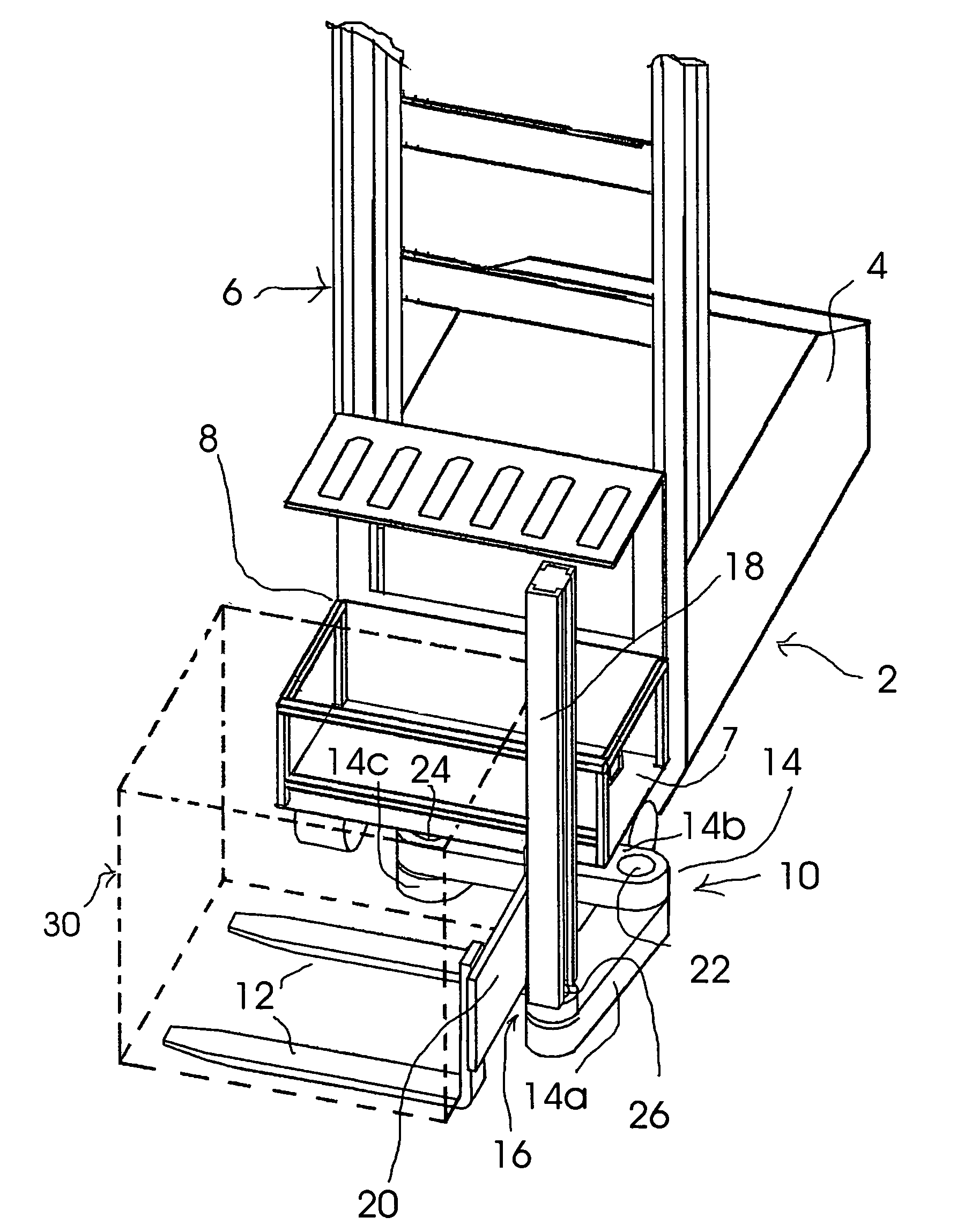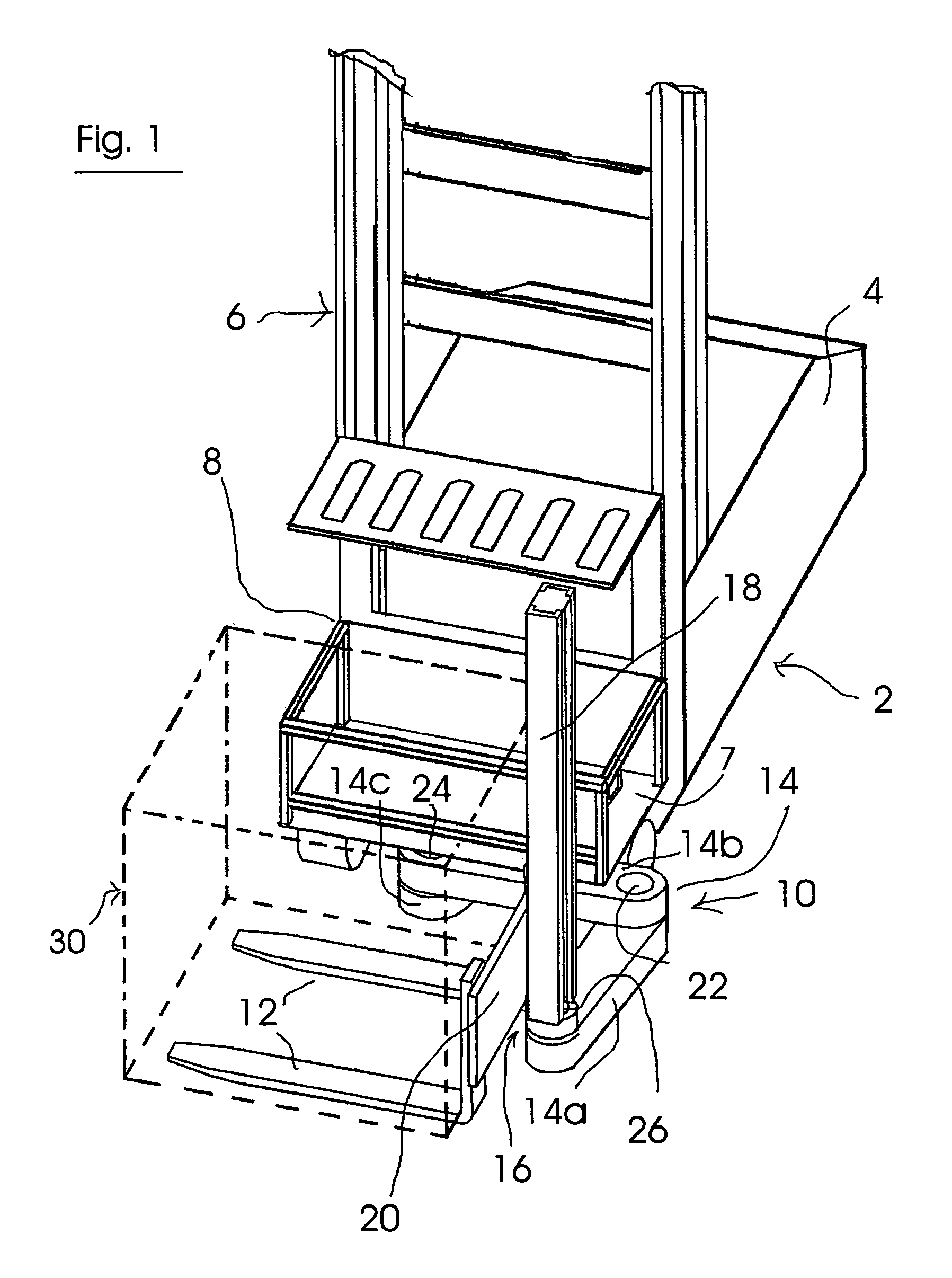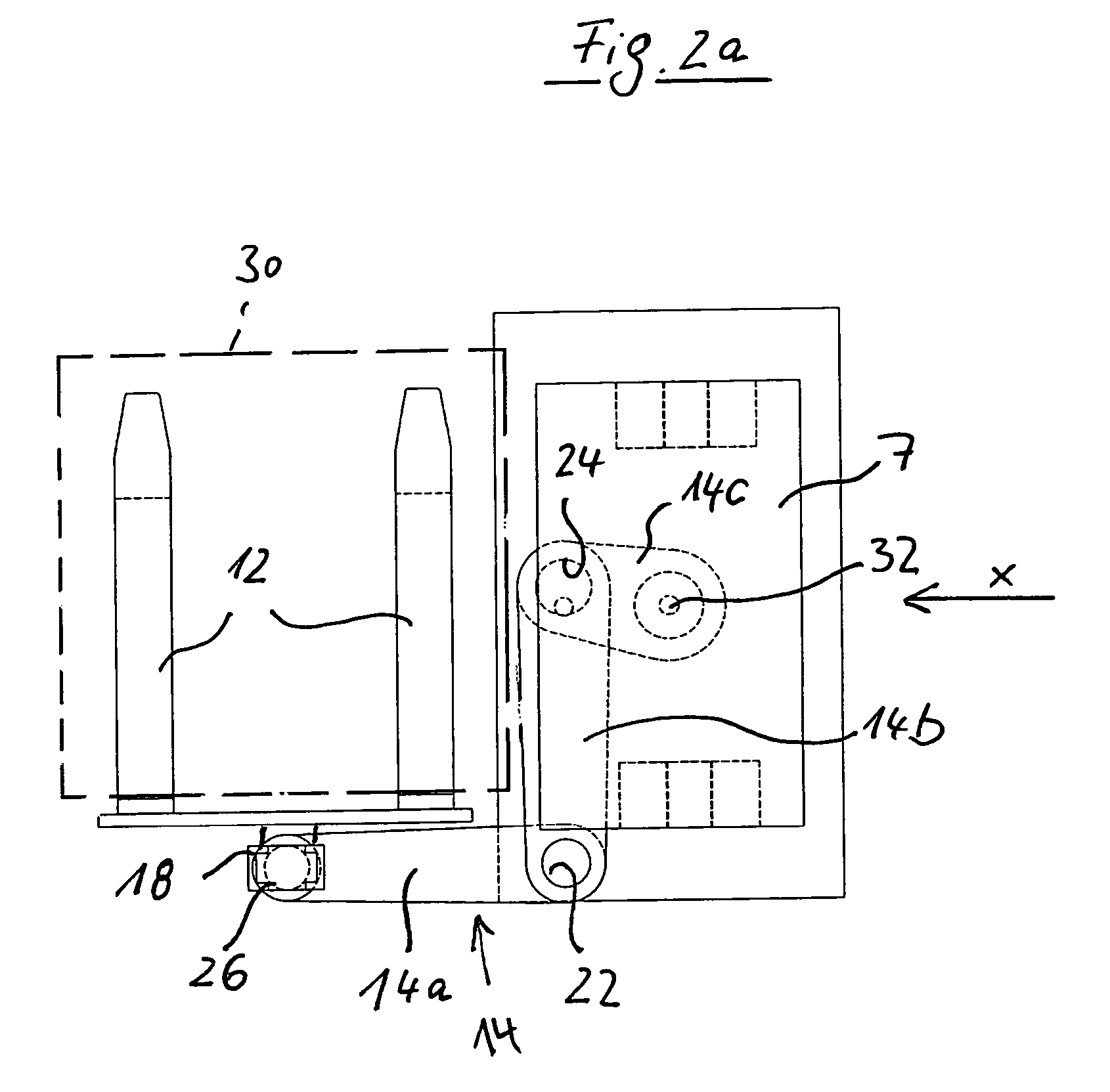Industrial truck
a technology for industrial trucks and cabs, applied in the field of industrial trucks, can solve the problem of not being able to form a disruptive lateral contour between the load and the cab for the operator in the cab
- Summary
- Abstract
- Description
- Claims
- Application Information
AI Technical Summary
Benefits of technology
Problems solved by technology
Method used
Image
Examples
Embodiment Construction
[0031]FIG. 1 shows a perspective illustration with a view of the front region of an industrial truck which can be used as a high-reach stacker. The industrial truck has a base vehicle 2, which has an essentially conventional design and has an electric motor drive.
[0032]Batteries for supplying the vehicle with electrical power, hydraulic assemblies, parts of the steering device, electronic or electrical components etc. are located beneath the hood 4 in the rear region of the vehicle 2. A mast 6 (illustrated partially) is provided on the base vehicle 2 and, in a known manner, has a rigid lower mast element and an upper mast element which can be displaced vertically and telescopically on said rigid lower mast element, a platform with a driver's cab 8 being guided on said upper mast element such that it can be moved vertically. The lifting drive in this example is hydraulic, as is conventional in the case of stacker vehicles of the type in question here.
[0033]The add-on device 10 of the...
PUM
 Login to View More
Login to View More Abstract
Description
Claims
Application Information
 Login to View More
Login to View More - R&D
- Intellectual Property
- Life Sciences
- Materials
- Tech Scout
- Unparalleled Data Quality
- Higher Quality Content
- 60% Fewer Hallucinations
Browse by: Latest US Patents, China's latest patents, Technical Efficacy Thesaurus, Application Domain, Technology Topic, Popular Technical Reports.
© 2025 PatSnap. All rights reserved.Legal|Privacy policy|Modern Slavery Act Transparency Statement|Sitemap|About US| Contact US: help@patsnap.com



